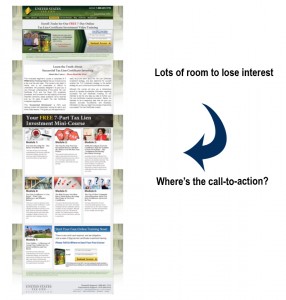Learn how leveraging Business Development Representative expertise in marketing can lead to smoother customer journeys, comprehensive sales funnels and increased revenue.
While business development representatives (BDRs) were always associated with sales, more and more companies have started integrating them into their marketing departments.
A recent study found that such alignment brings 208% more value from marketing with 108% less effort. Businesses that have already adopted the model close 67% more deals.
Sounds impressive? Let’s dive into this growing trend to discover how the synergy between BDRs and the marketing team can impact your strategy and outcomes — and help you outdo your competitors.
The drivers behind BDRs and marketing coming together
Traditionally, marketing teams take care of inbound lead generation and content creation. At the same time, BDRs focus on outbound lead generation and qualification of inbound leads. This makes them more aligned with the sales team, serving as a bridge between potential clients and sales reps.
Marketing efforts also generate leads. But BDRs and sales reps ignore 50% of them, as they consider those leads poor quality. In other words, BDRs and sales blame marketing for bringing MQLs/SQLs that don’t convert. Marketing complains that the leads are good, but the problem is on the sales side.
But is it marketing or sales to blame? I believe that miscommunication and asynchronous actions are the core of the issue. The shifting customer engagement dynamics require a more cohesive approach. Here are a few points that prove that:
- Decision-makers crave personalized, value-driven interactions. For instance, 57% to 72% of B2B customers want personalized content at each stage before and after purchase.
- They also expect companies to understand their individual needs. 95% of B2B buyers say it’s important that sales reps gather some insights about their company and know their industry specifics.
To meet those requirements, marketers should stay updated with the changing customer needs. By regularly syncing with BDRs, they can get instant feedback about the quality of the leads they bring. This can help them tailor their marketing strategies on the go and effectively address potential clients’ specific needs and pain points.
Benefits of leveraging BDR expertise in marketing
Regular strategy reviews and adjustments can bring more meaningful and successful engagements. But here are some more reasons why businesses should combine the expertise of BDRs in lead qualification with the creative strategies of marketers:
- A continuous feedback loop. Closely collaborating with BDRs is like having a built-in focus group that’s always ready to give insights. Learning from bad or good experiences can help marketers tune their activities or even change focus, elevating the quality of leads.
- Smoother customer journey. Depending on the feedback BDRs get from the leads, marketing can build up more relevant touchpoints. By offering clients more communication channels, they not only increase their chance to get noticed. They also make it more convenient for their potential buyers to engage with them.
- Comprehensive sales funnel view. A deeper dive into the sales processes enables marketers to better understand customer needs, pains and objections. Based on these insights, they can ensure that marketing campaigns are always on point.
- Increased revenue and growth. The more orchestrated your marketers and BDRs are, the higher their results will be.
Overall, the more marketers dive into sales, the more value they can offer both to potential clients and BDRs. This is way beyond just crafting resonating campaigns and enhancing customer experience. It’s about being there for customers whenever any question arises — at any stage of their journey and supplying your BDR team with relevant content and materials they might need to handle objections.
Also, this is the point where companies should go beyond traditional approaches to measuring marketing performance. It shouldn’t be about a pure number of MQLs or SQLs. It’s about a marketing-influenced revenue (MIR). Because with more marketing touches, the revenue can surge.
So, how do you align BDRs and marketing?
We’ve built a sophisticated process that helps our BDR and marketing teams be on the same page. While it may not be a fit for you as it is, here are a few tips from my experience on how to build yours:
Set shared goals
Though marketers and BDRs keep track of different metrics, they all have a common goal: to convert more new leads into deals. You can jumpstart their alignment by giving them a common ground to head to.
Define MQLs and SQLs
To avoid ambiguity and misunderstanding, agree on your own definition of these terms. Thus, both teams will approach lead qualification in the same way. It’ll also help to eliminate the discussions about good/bad leads.
Establish unified lead scoring
Based on the MQL and SQL definitions, map the process of evaluating leads and qualifying them to move to the next stage. Use automation whenever possible. For example, we use Chili Piper on our website lead forms for pre-scoring, simplifying the BDR’s routine and helping our marketing team track the leads coming from marketing activities.
Schedule joint activities
These can be weekly or monthly syncs, retrospective meetings, key metrics reviews, etc. Also, I’d recommend adding both team members to the strategic sessions of the other team to provide them with more context.
Foster a culture of collaboration
Encourage your teams to work together on a company level. In this case, the alignment is crucial for marketing, BDRs and sales teams.
These are just a few recommendations, but I’m sure they can become a good place to start for you.
The synergy effect: When 1+1>2
Incorporating BDRs into marketing isn’t just about improving lead generation or content creation. It’s about building a cohesive business strategy where every department works harmoniously, from sales to marketing.
This alignment ensures that businesses can adapt quickly to market changes, innovate faster and stay ahead of the competition. From my experience, it can double YoY growth, boost ROMI by 150% and reduce CAC twice. And yes, our CEO sleeps better. 
The post How embedding BDRs into marketing can boost your sales appeared first on MarTech.
(10)
Report Post





